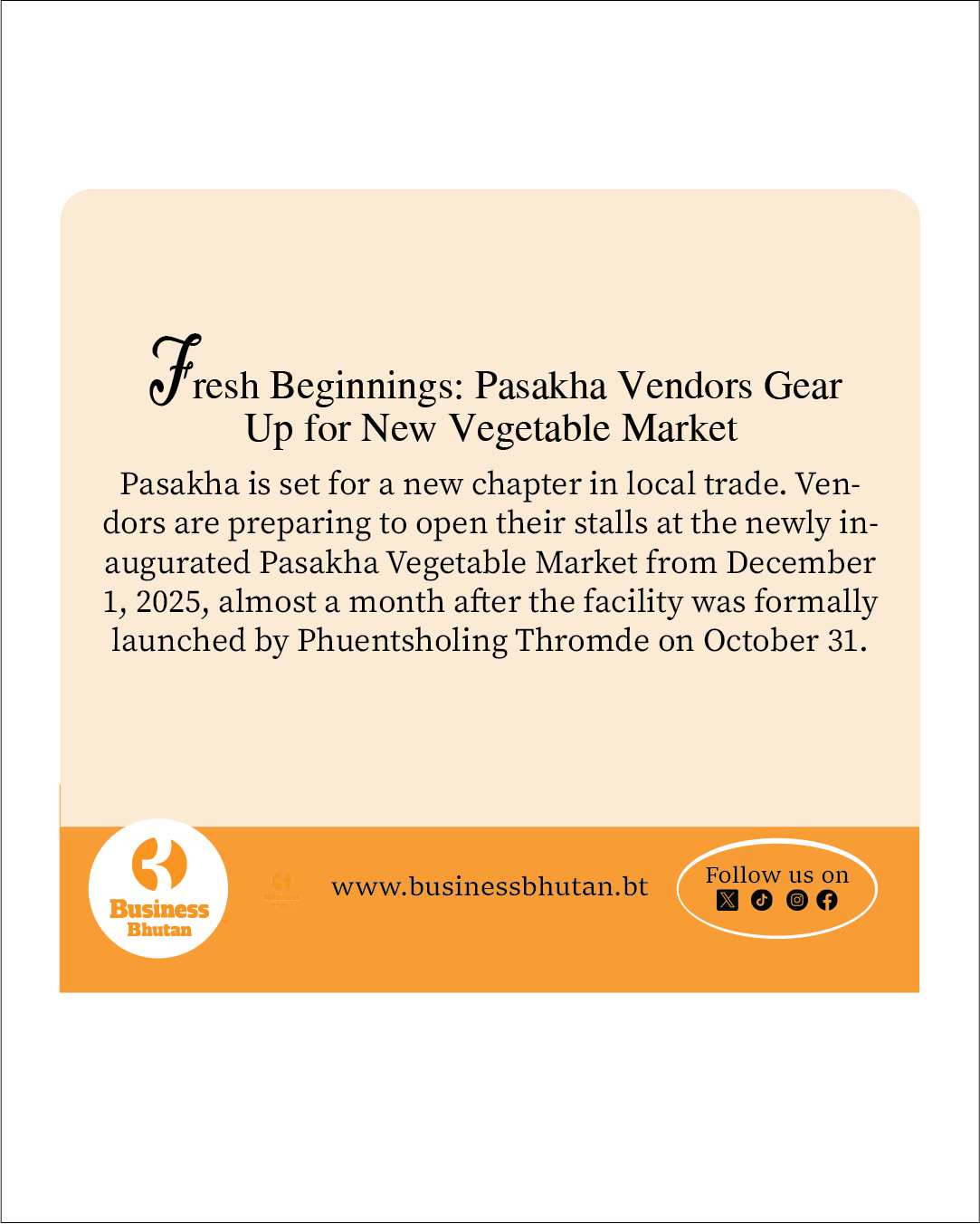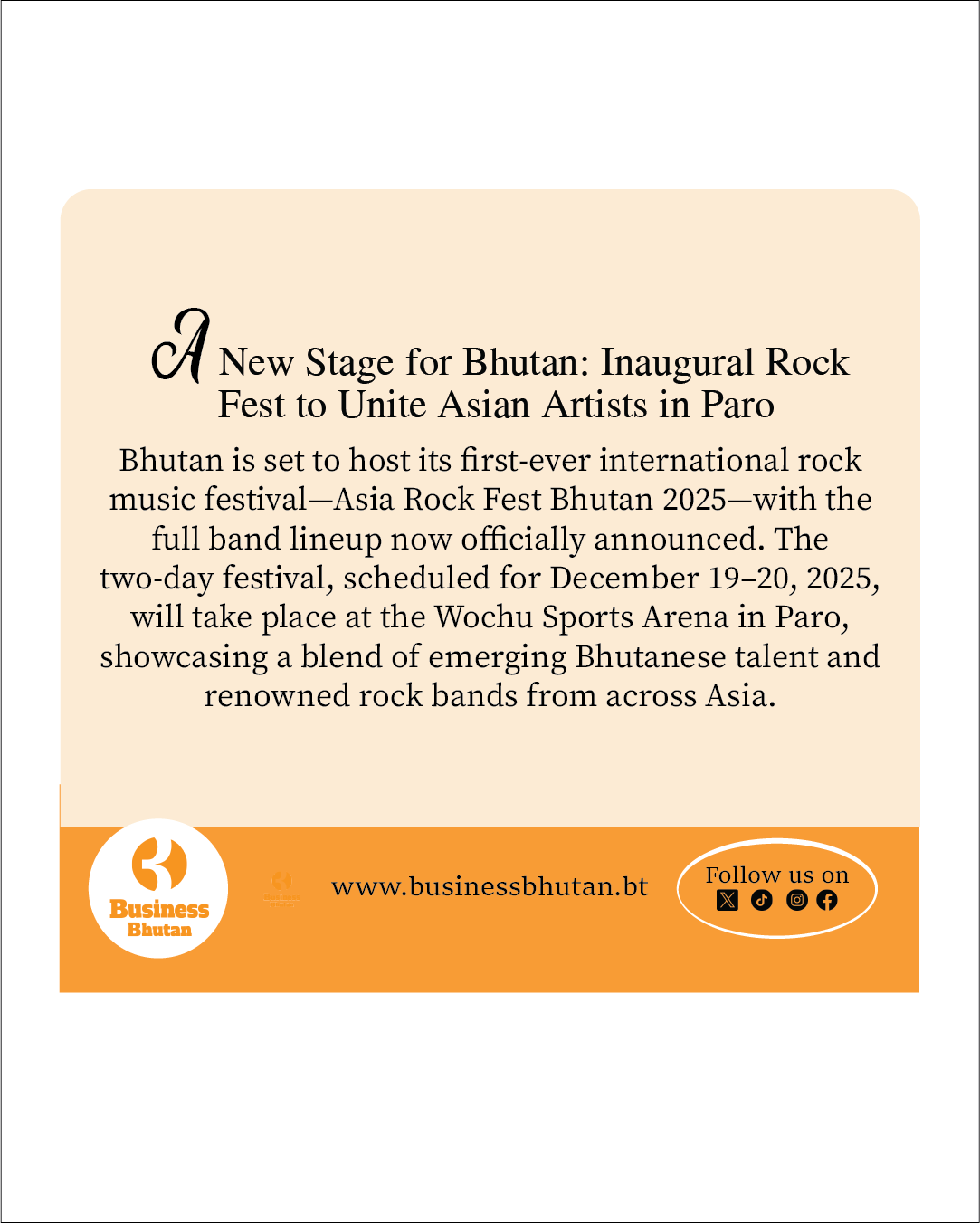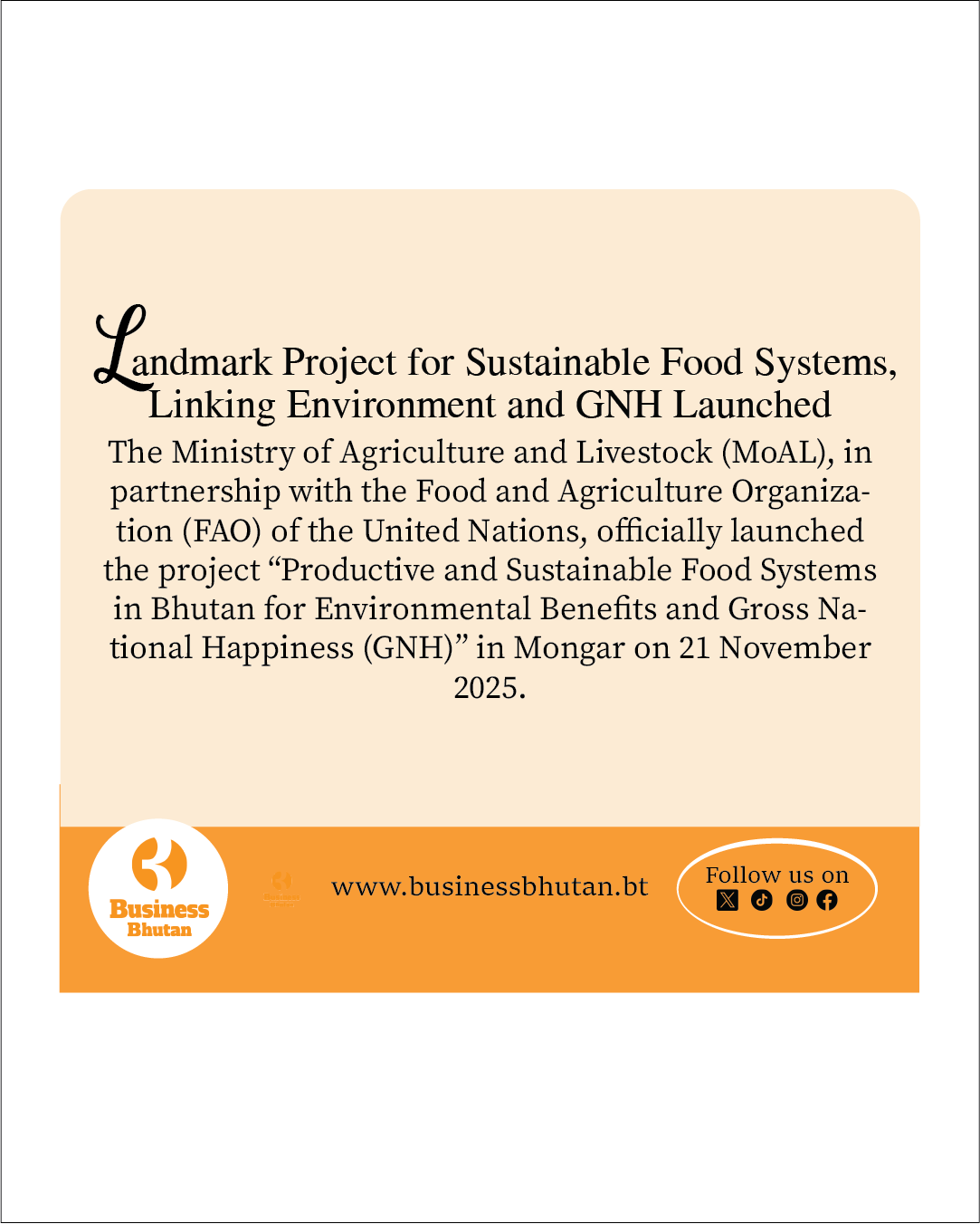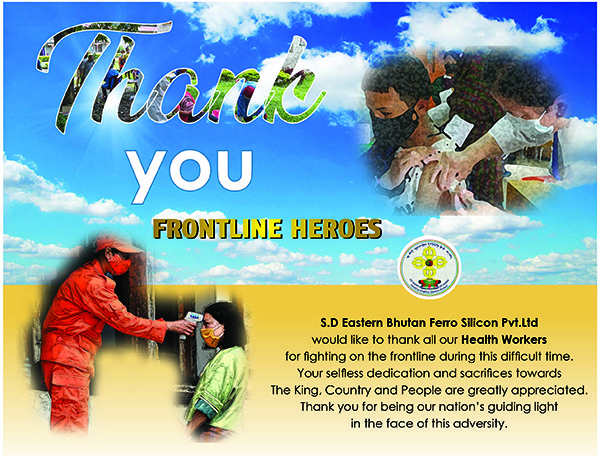Bhutan is poised to mark another milestone in its cultural evolution with the launch of Bhutan Fashion Week (BFW), commencing next week. This event arrives at a pivotal moment in the nation’s journey of redefining its identity in a rapidly globalizing world. More than a showcase of glamour and aesthetics, BFW represents a visionary blend of creativity, culture, and commerce. It is a stage where tradition will converse with modernity.
At its core, BFW seeks not merely to celebrate fashion but to reimagine it as a vehicle for cultural preservation, youth empowerment, and economic diversification. By bridging Bhutan’s deep-rooted textile heritage with the language of contemporary design, the event promises to weave a narrative that is both timeless and forward-looking.
Fashion, in Bhutan’s context, is far more than a matter of attire. It is a reflection of history, craftsmanship, and identity. The country’s handwoven fabrics, such as kira and gho, along with intricate patterns that carry centuries of symbolism, embody the soul of Bhutanese artistry. BFW offers an opportunity to keep these traditions alive by reinterpreting them for modern audiences.
Through the collaboration of weavers and designers, age-old techniques can be revitalized with fresh creativity, ensuring that traditional craftsmanship remains relevant to younger generations. The event, therefore, becomes not just a display of aesthetics but a living archive of Bhutan’s cultural continuity, affirming pride in national identity while inspiring innovation.
Bhutan’s textile industry rests on the skill and dedication of rural women weavers and artisans, whose work sustains both families and cultural legacies. BFW could become a transformative platform linking these artisans to designers, buyers, and fashion houses, expanding market access beyond local boundaries.
By fostering partnerships and promoting Bhutanese craftsmanship internationally, the event has the potential to create livelihoods for women and youth, reducing rural–urban disparities and strengthening community resilience. Such inclusion aligns seamlessly with Bhutan’s developmental philosophy of Gross National Happiness (GNH), where economic progress is measured alongside social and cultural well-being.
Fashion possesses a unique power to communicate culture without words. Through BFW, Bhutan can project its aesthetic values and spiritual ethos to global audiences, positioning fashion as a form of soft diplomacy.
The event could attract designers, media, and investors to Bhutan, transforming cities like Thimphu into cultural and creative hubs. This visibility not only enhances Bhutan’s global image but also supports its “high-value, low-volume” tourism model, inviting visitors who appreciate authenticity, sustainability, and artistry. Over time, Bhutan could even cultivate a new niche: fashion tourism — where travelers come to experience traditional weaving, attend workshops, and purchase authentic handmade textiles.
Globally, the creative industries are among the fastest-growing economic sectors, and fashion lies at their heart. For Bhutan, nurturing a creative economy means diversifying beyond hydropower and agriculture, empowering a new generation of artists, photographers, event organizers, and digital content creators.
If supported by policy and infrastructure, BFW could attract investment in sustainable fashion ventures, creating a network of professionals who merge artistry with entrepreneurship. This would help Bhutan position itself as a regional hub for sustainable and ethical fashion, consistent with its environmental and cultural values.
Bhutan’s global reputation as a carbon-negative nation and its deep commitment to environmental stewardship offer a compelling foundation for promoting eco-friendly fashion. BFW can champion the use of organic materials, natural dyes, and zero-waste production methods, setting new benchmarks for ethical design.
Such practices would not only align with Bhutan’s ecological principles but also appeal to a growing international market for sustainable luxury. By branding its fashion industry around integrity and mindfulness, Bhutan could distinguish itself as a model for how sustainability and style can coexist.
While the event itself is historic and significant, BFW also reflects the evolving mindset of the institutions driving it, notably the Department of Media, Creative Industry and Intellectual Property (DoMCIIP) and the Royal Textile Academy (RTA). Their involvement signals more than logistical support; it represents a strategic recognition that culture is not merely a symbol of national identity, but a dynamic instrument of development.
In many ways, BFW is a manifestation of how Bhutan’s policy landscape is gradually expanding beyond its traditional economic pillars to embrace the creative and cultural sectors as engines of innovation and soft power. The RTA, long a guardian of Bhutan’s textile heritage, is repositioning itself from preservationist to cultural entrepreneur, exploring how heritage can coexist with market relevance. Similarly, DoMCIIP’s participation suggests a shift in how economic agencies perceive culture; not as a decorative pursuit but as a resource for diversification, youth engagement, and sustainable enterprise.
While BFW is an encouraging example of institutional innovation, it also serves as a test of policy coherence, whether the nation can balance cultural preservation with creative freedom, and social inclusion with economic ambition. The engagement of RTA and MoICE, if guided by genuine collaboration with grassroots artisans and ethical designers, could set a precedent for how Bhutan integrates culture into its development agenda. But if driven primarily by prestige or market appeal, the event could risk becoming a spectacle rather than a sustainable movement.
Ultimately, BFW tells us as much about Bhutan’s evolving fashion scene as it does about the country’s broader developmental imagination, one that is learning to see culture not as static tradition, but as a living, adaptable force within the nation’s pursuit of prosperity and Gross National Happiness.
Further, BFW signifies far more than a celebration of glamour. It is strategic platform for cultural revival, creative innovation, and international collaboration. By harmonizing tradition and modernity, Bhutan can tell its story to the world in new and inspiring ways.
If managed inclusively and sustainably, BFW could become a symbol of national progress, demonstrating how culture and commerce can reinforce one another under the guiding philosophy of Gross National Happiness. In doing so, Bhutan will not only preserve its heritage but also weave it into the fabric of its economic and creative future.
Tandin Wangchu
Chamgang, Thimphu



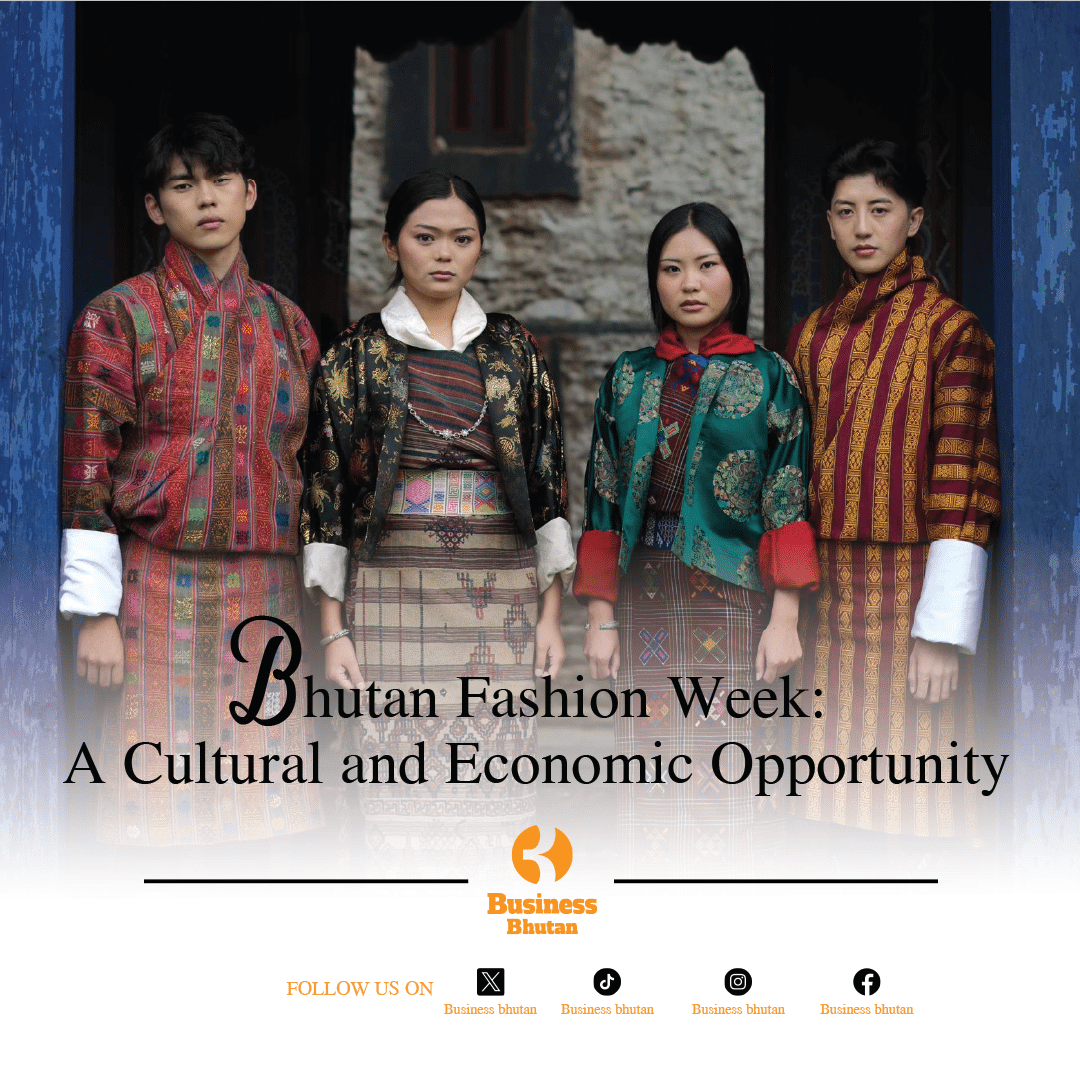
![Fresh Beginnings: Pasakha Vendors Gear Up for New Vegetable Market - Duplicate - [#16963] Fresh Beginnings: Pasakha Vendors Gear Up for New Vegetable Market - Duplicate - [#16963]](https://businessbhutan.bt/wp-content/uploads/2025/11/Asset-200.png)
